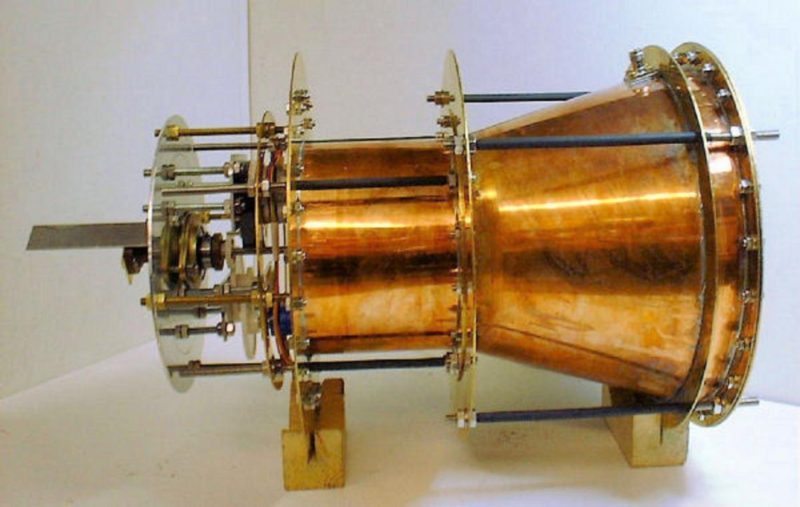Leaked NASA Paper Shows “Impossible” EmDrive Works
Ashley Allen / 8 years ago

A NASA-developed, fuel-less spacecraft drive – dubbed “impossible” since it breaks Newton’s Third Law, and thus has been the source of much scepticism in the scientific community – has been shown to work in a paper that leaked earlier today (7th November). The paper, entitled “Measurement of Impulsive Thrust from a Closed Radio Frequency Cavity in Vacuum”, details tests conducted by NASA in late-2015, the results of which show that the controversial EmDrive not only works, but is capable of generating a significant amount of thrust.
The tests were conducted by NASA’s Eagleworks Laboratory last year, and demonstrate that the EmDrive can generate a force of 1.2 millinewtons per kilowatt in a vacuum, even after error measurements have been accounted for. For comparison, the Hall-effect thruster (HET) – the most powerful propellant-driven thruster ever created – can generate force of 60 millinewtons per kilowatt, but is a massive structure and requires heavy fuel tanks, all of which offset that potential force, Eagleworks says. The tests conducted were to merely prove that the EmDrive worked, so optimisation could push that force generation even higher in future tests.
“The test campaign included a null thrust test effort to identify any mundane sources of impulsive thrust, however none were identified,” the paper concluded. “Thrust data from forward, reverse, and null suggests that the system is consistently performing with a thrust to power ratio of 1.2 ± 0.1 millinewtons per kilowatt.”
Now that NASA has shown that the EmDrive works, now all it has to do is explain out is how exactly its “impossible” drive is able to break the laws of physics as we know them.



















